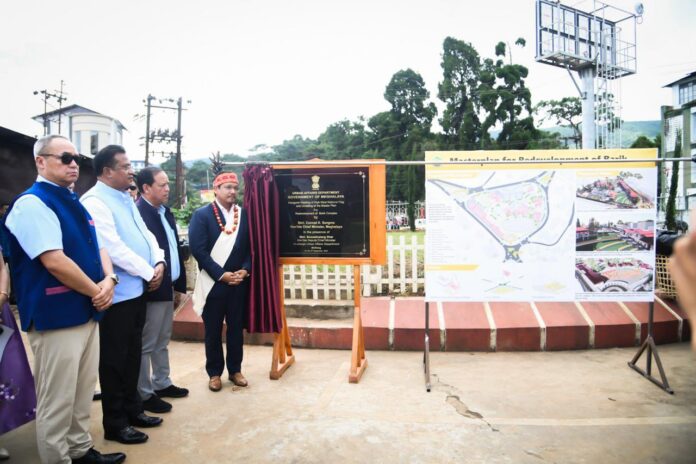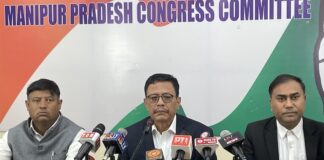Shillong: Meghalaya Chief Minister Conrad K Sangma unveiled the master plan for the redevelopment of Barik Complex into a Unity Park and hoisted a high mast national flag at the PWD complex in Barik, Shillong. The project, led by the Urban Affairs Department, aims to transform the area into a vibrant public space, symbolising unity and celebrating the state’s diverse cultural heritage.
Speaking at the event, Chief Minister Sangma stated, “Today marks a historic moment as we hoist the high mast national flag and unveil the master plan for the redevelopment of Barik Complex.” He highlighted that the project aims to beautify Shillong and make it a greener city, with an estimated budget of approximately ₹25 crores. The redevelopment work is expected to begin by October or November this year.
The Chief Minister emphasized that the project will respect the sensitivities of the local communities, with minimal intervention and preservation of the nine heritage buildings within the complex. Unity Park will feature representations of different cultures and tribes, including Khasi, Pnar, Garo, Bodos, and others, symbolizing the unity of the state and the nation. The park will also display art representing various cultures from other states, reinforcing the theme of unity.
He commended the cooperation between the Urban Affairs Department and the Public Works Department in bringing this iconic project to life and announced further plans to transform the entire Shillong city, with significant progress expected within the next 12 months. He reiterated the importance of unity, drawing on the historical collaboration of the state’s tribes in achieving statehood, and expressed hope that Unity Park would continue to inspire unity in the future.
Addressing the gathering, D.P. Wahlang, Chief Secretary of Meghalaya, noted that the high mast national flag is among the tallest and largest in the Northeast region. He highlighted that the redevelopment of Barik Complex has been a long-standing vision, now realized under the current government’s leadership.
The redevelopment of Barik Complex is part of a broader government initiative to alleviate congestion in Shillong’s core, enhance open spaces, and improve residents’ quality of life by creating pedestrian-friendly areas and recreational spaces for children. The project will convert the 3.5-acre PWD complex into an iconic public space that celebrates cultural heritage, provides a rich experience for tourists, and serves as a social gathering place for residents.
The monumental national flag, made from 100% polyester cloth, stands at a height of 40 meters, with a size of 45 feet by 30 feet, adhering to the Flag Code of India. The project addresses technical considerations such as flagpole height, visibility, flag material, and wind resistance with specialized expertise.
Key components of the ₹25 crore project include a pedestrian plaza, an open ground, the high mast national flag, an open exhibition area, a taxi terminal and parking, a moving lane for private vehicles, a food court, a children’s play area, and the adaptive reuse of nine identified heritage buildings into tourist information centers, souvenir shops, cafes, galleries, and workshops.
The redevelopment involves transforming and restoring nine heritage buildings, over 100 years old and currently housing PWD offices. These buildings, identified by INTACH (Indian National Trust for Art and Cultural Heritage), include one Grade 1 building of national or historical importance and eight Grade 2 buildings of regional or local significance. They will be repurposed for adaptive reuse, preserving their historical value while serving new community-focused functions.
The unveiling event was attended by Comingone Ymbon, Minister of Water Resources; Abu Taher Mondal, Power Minister; D.P. Rosetta Mary Kurbah, Deputy Commissioner of East Khasi Hills District; Isawanda Laloo, Director of Urban Affairs Department; Idashisha Nongrang, Director General of Police; B.W. Phira, Secretary of PWD, along with other officials from PWD, Urban Affairs Department, allied departments, police officials, and NCC cadets.


